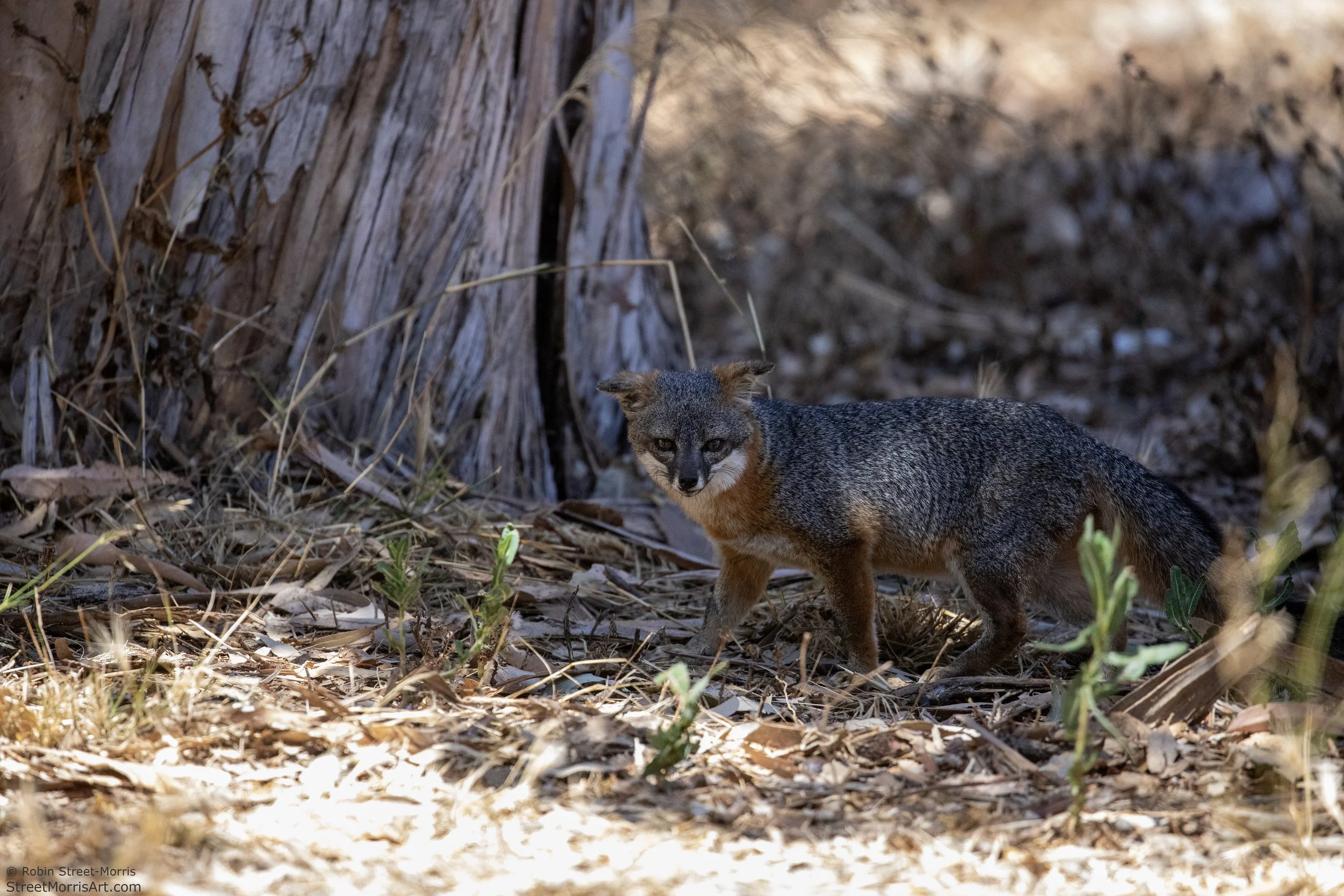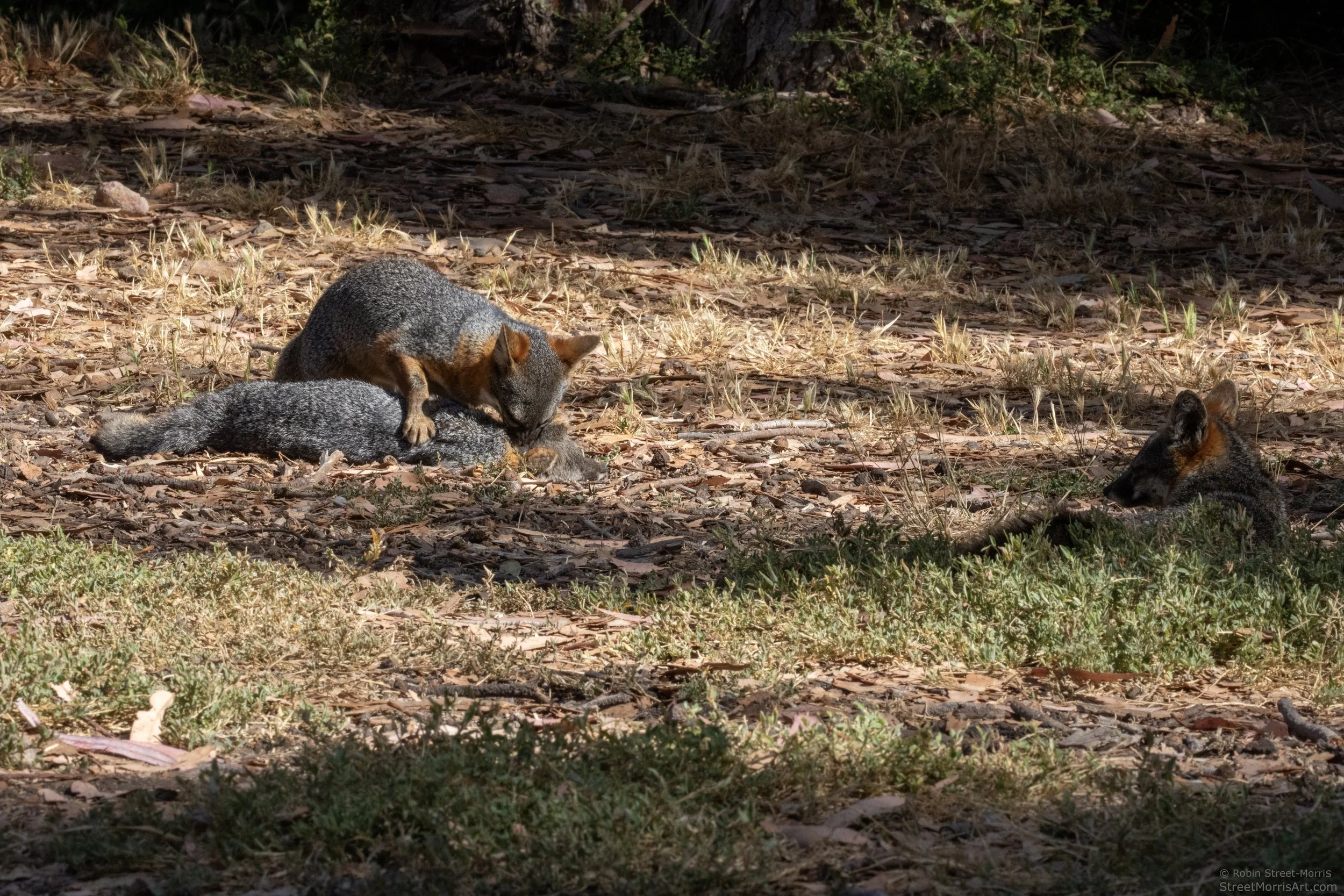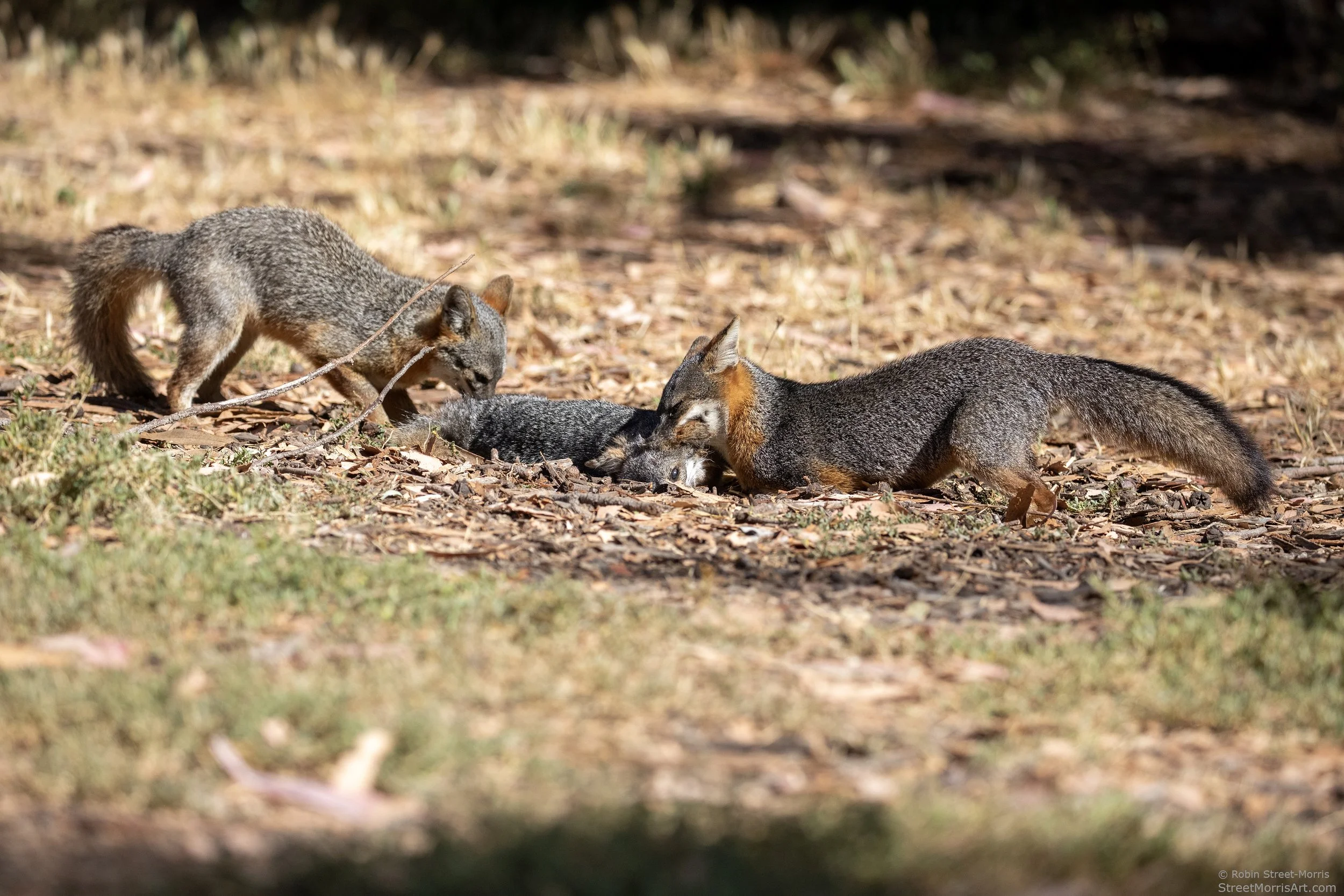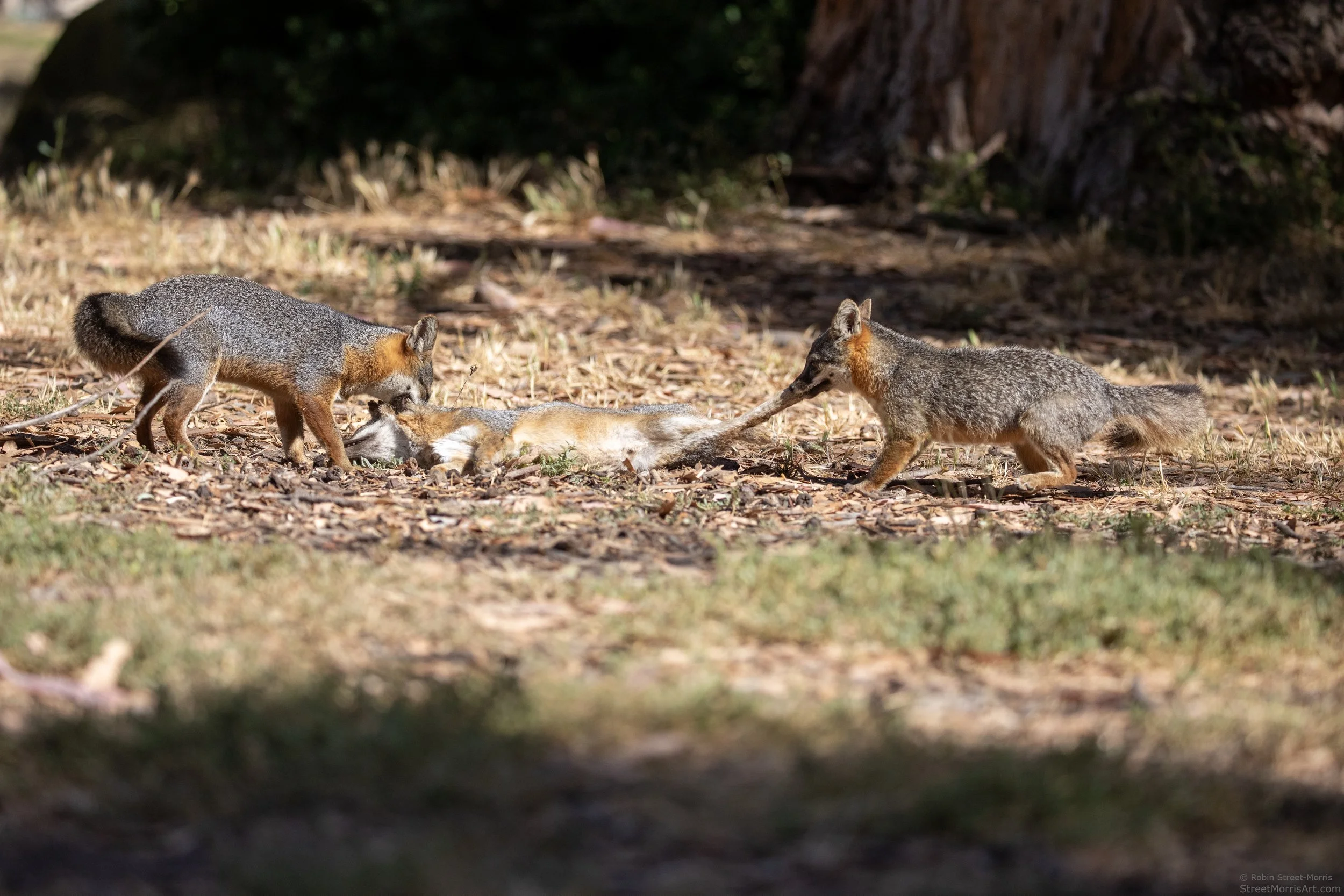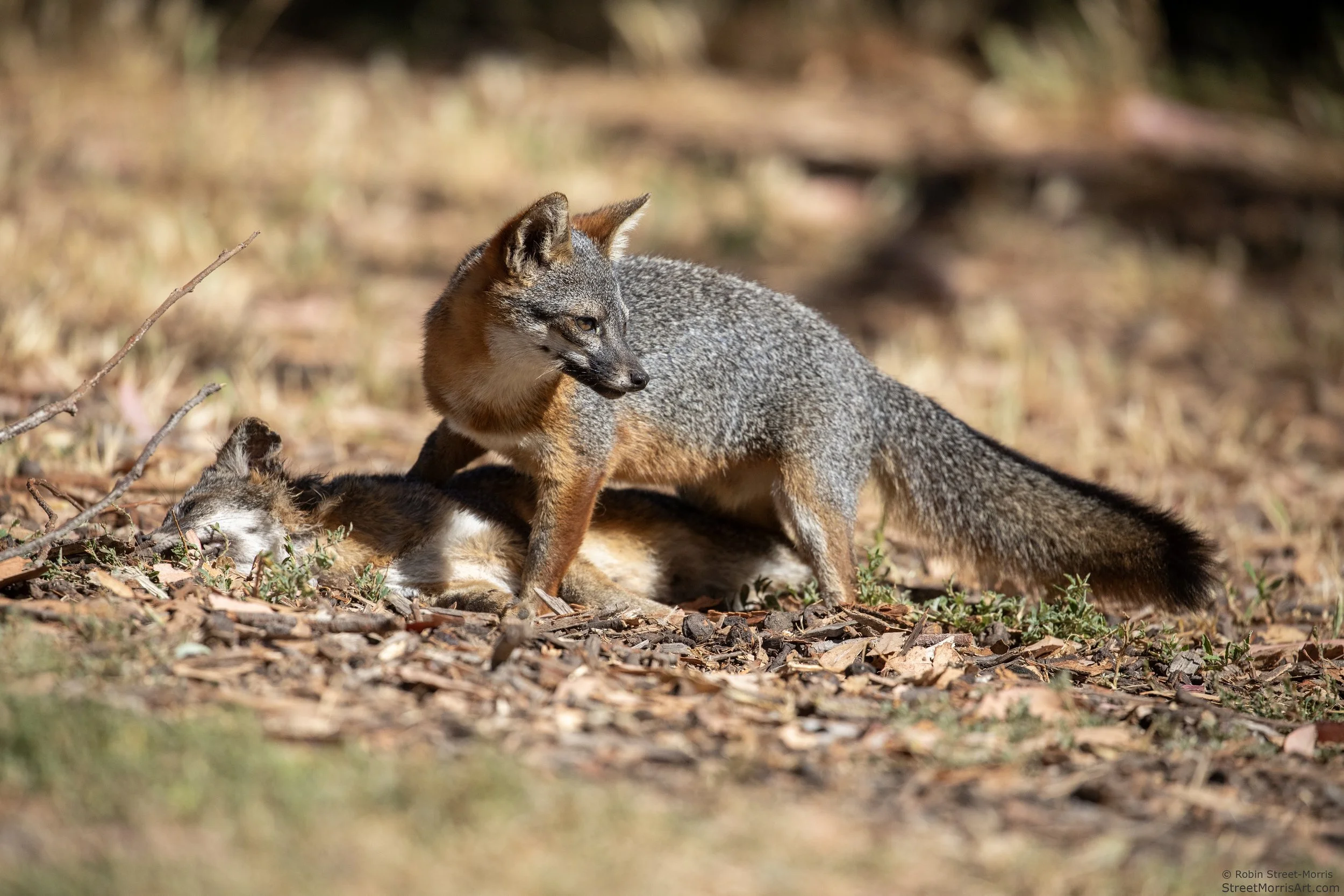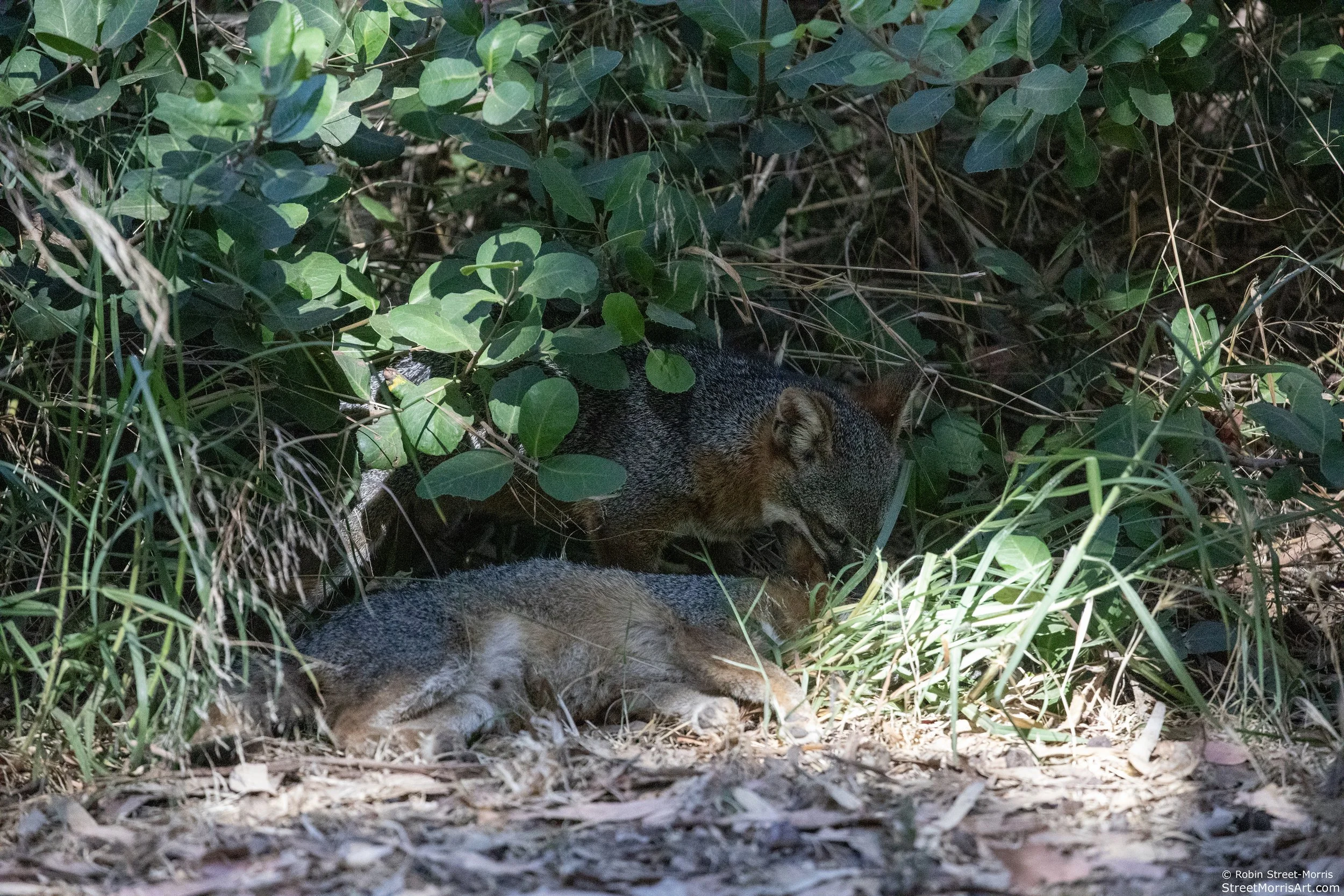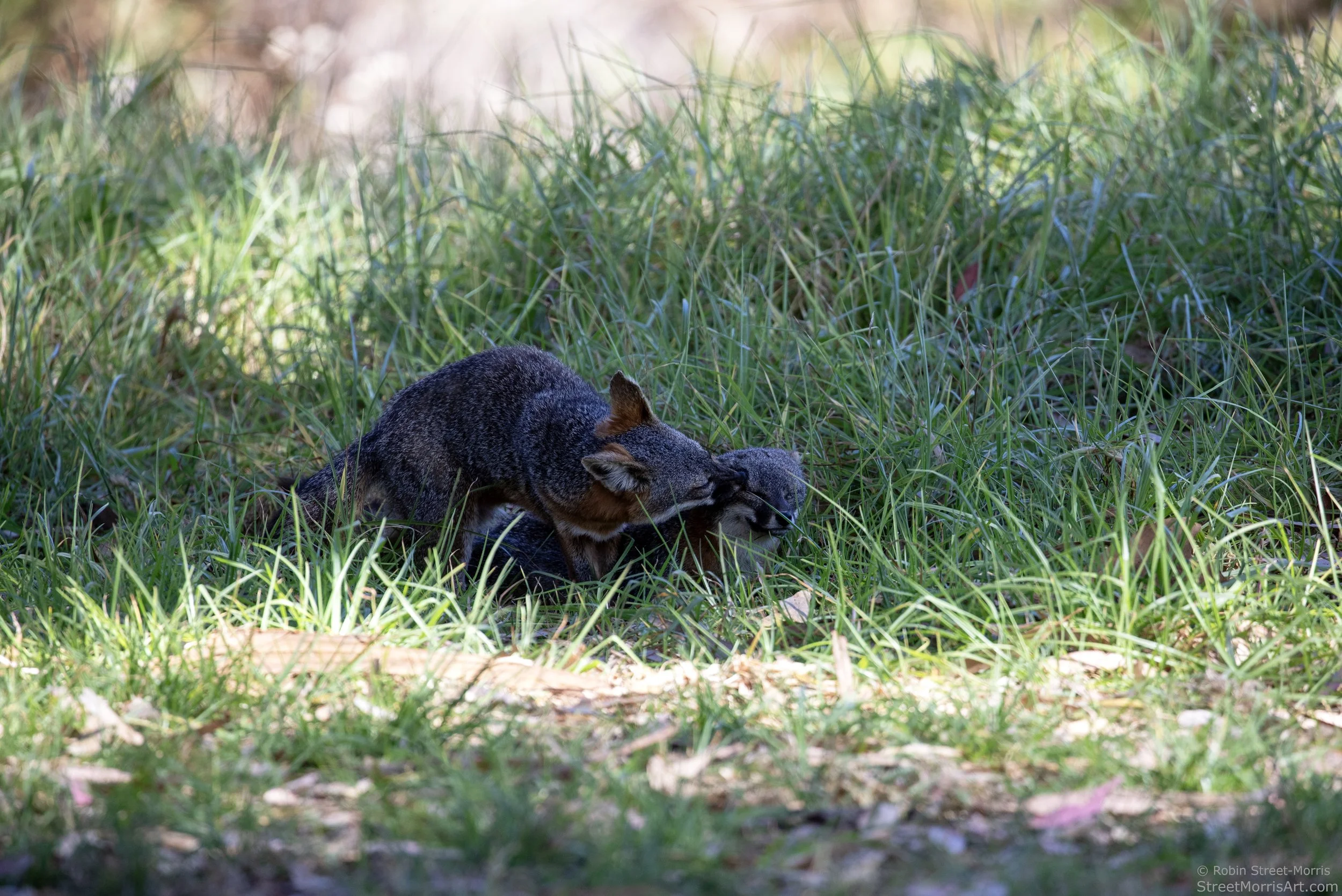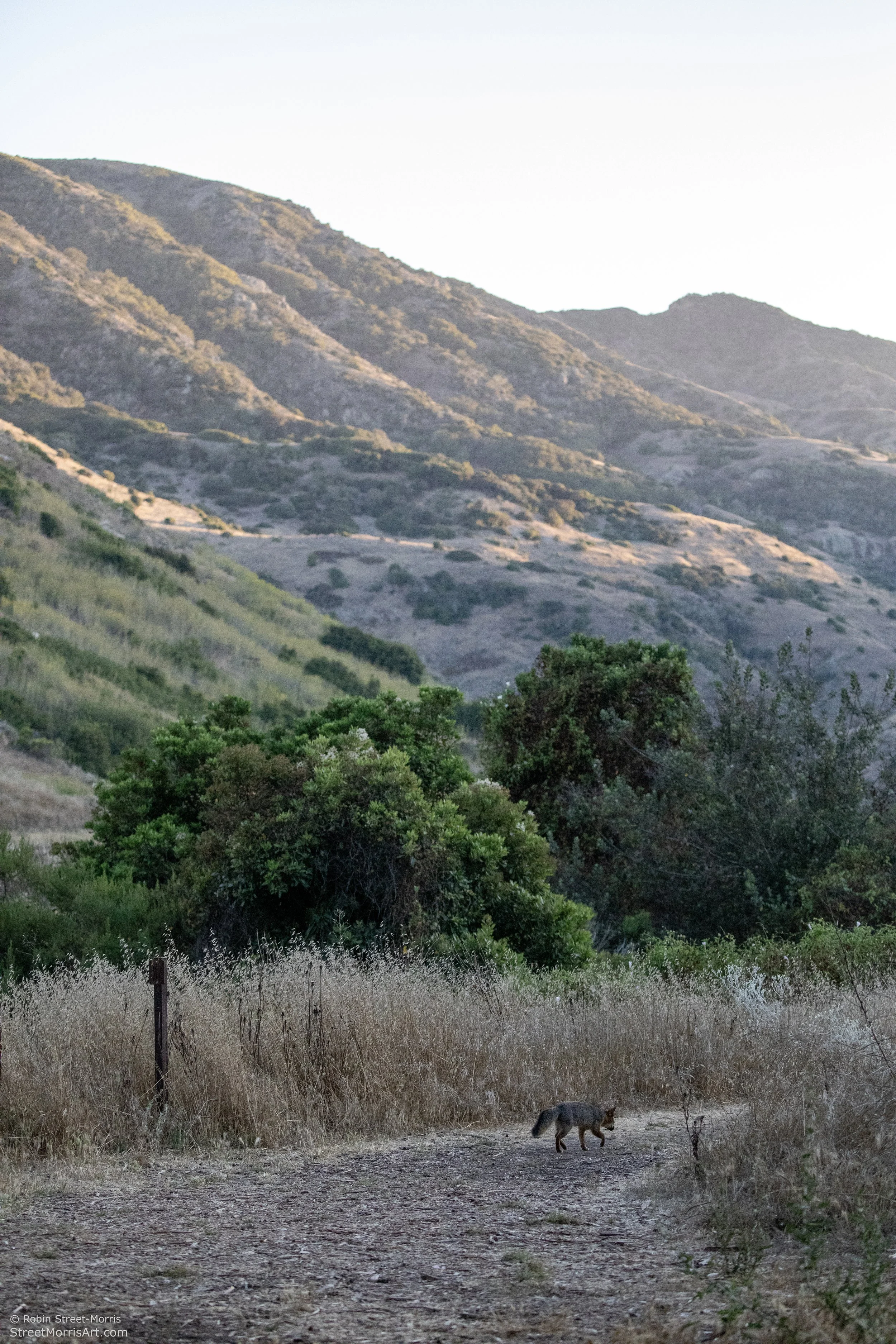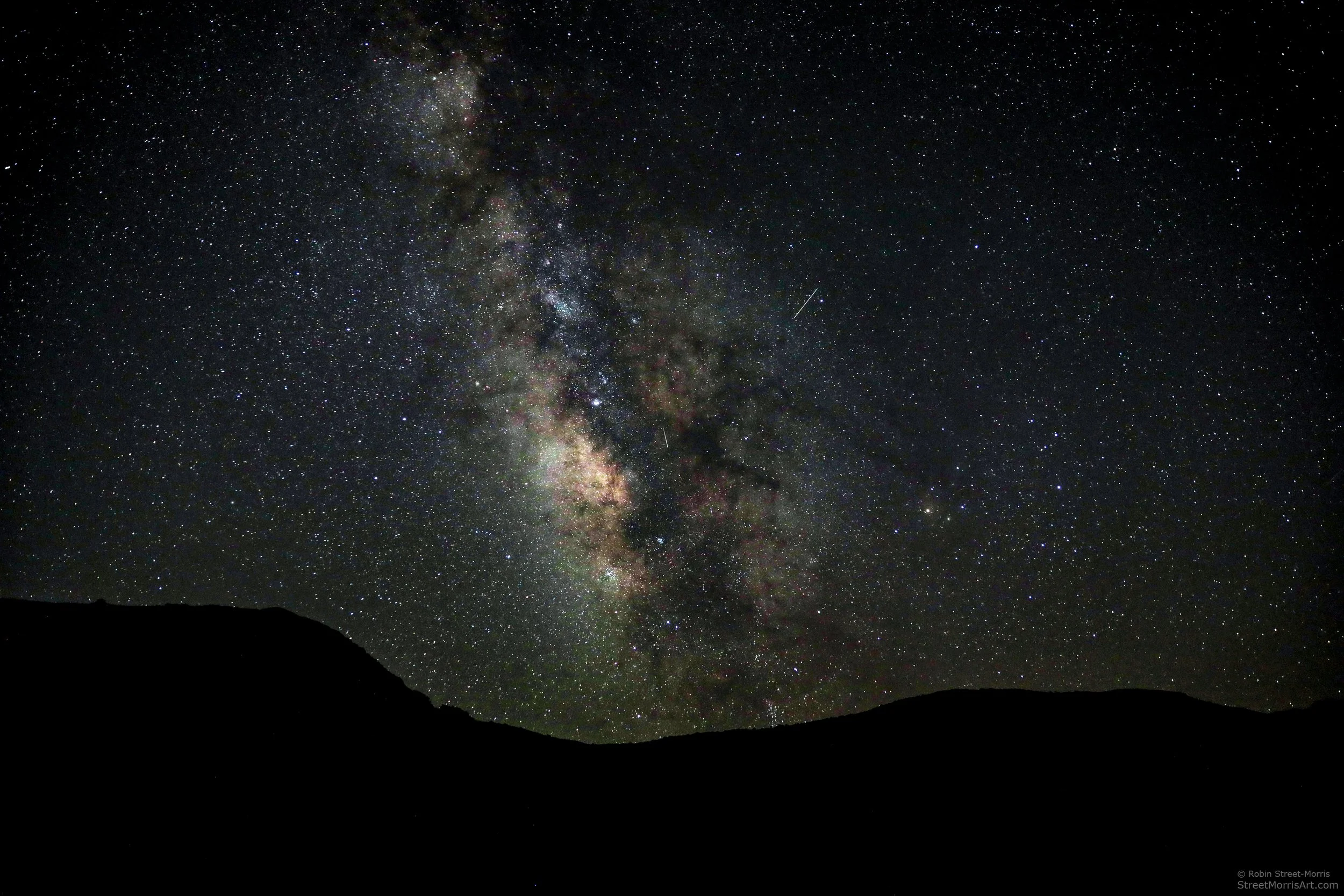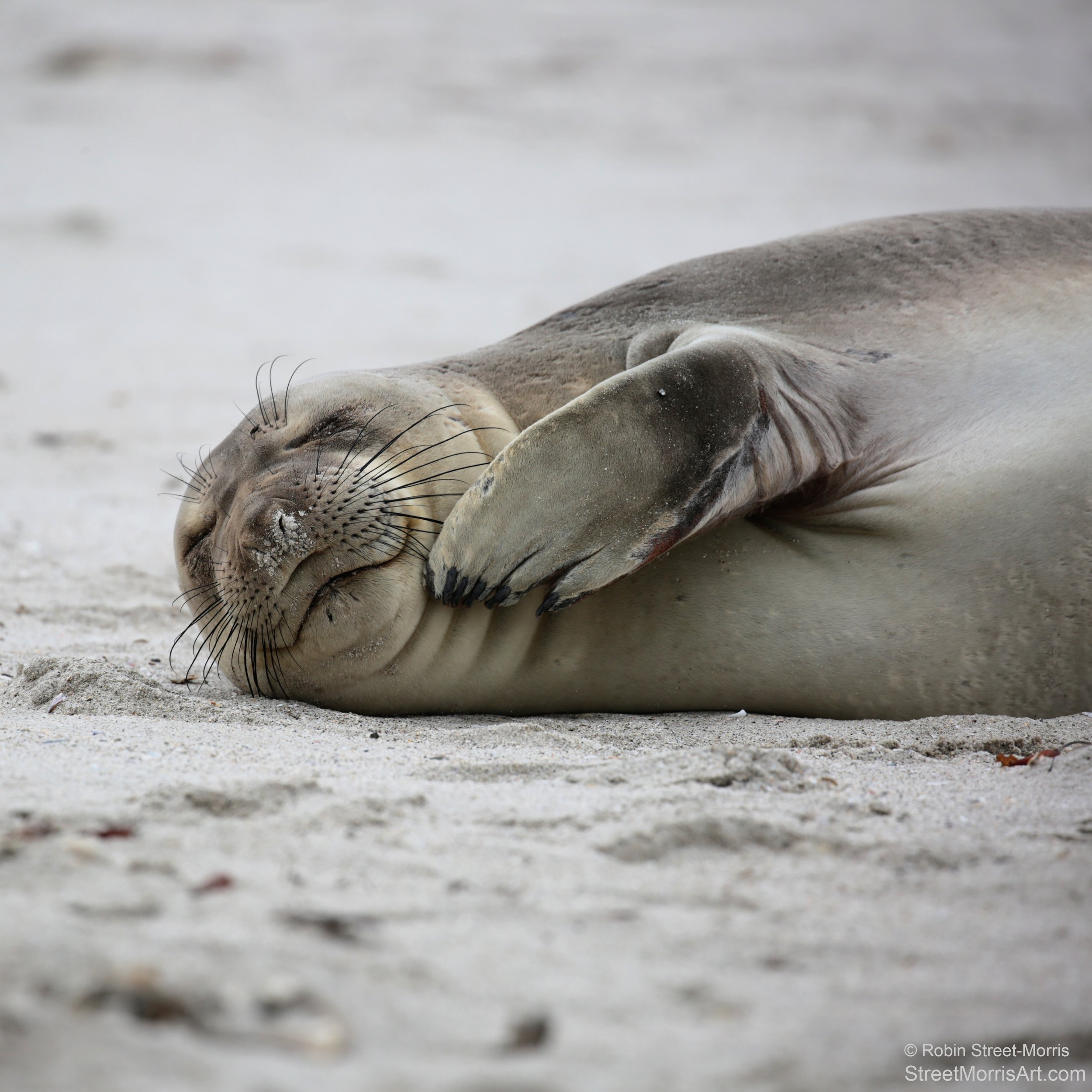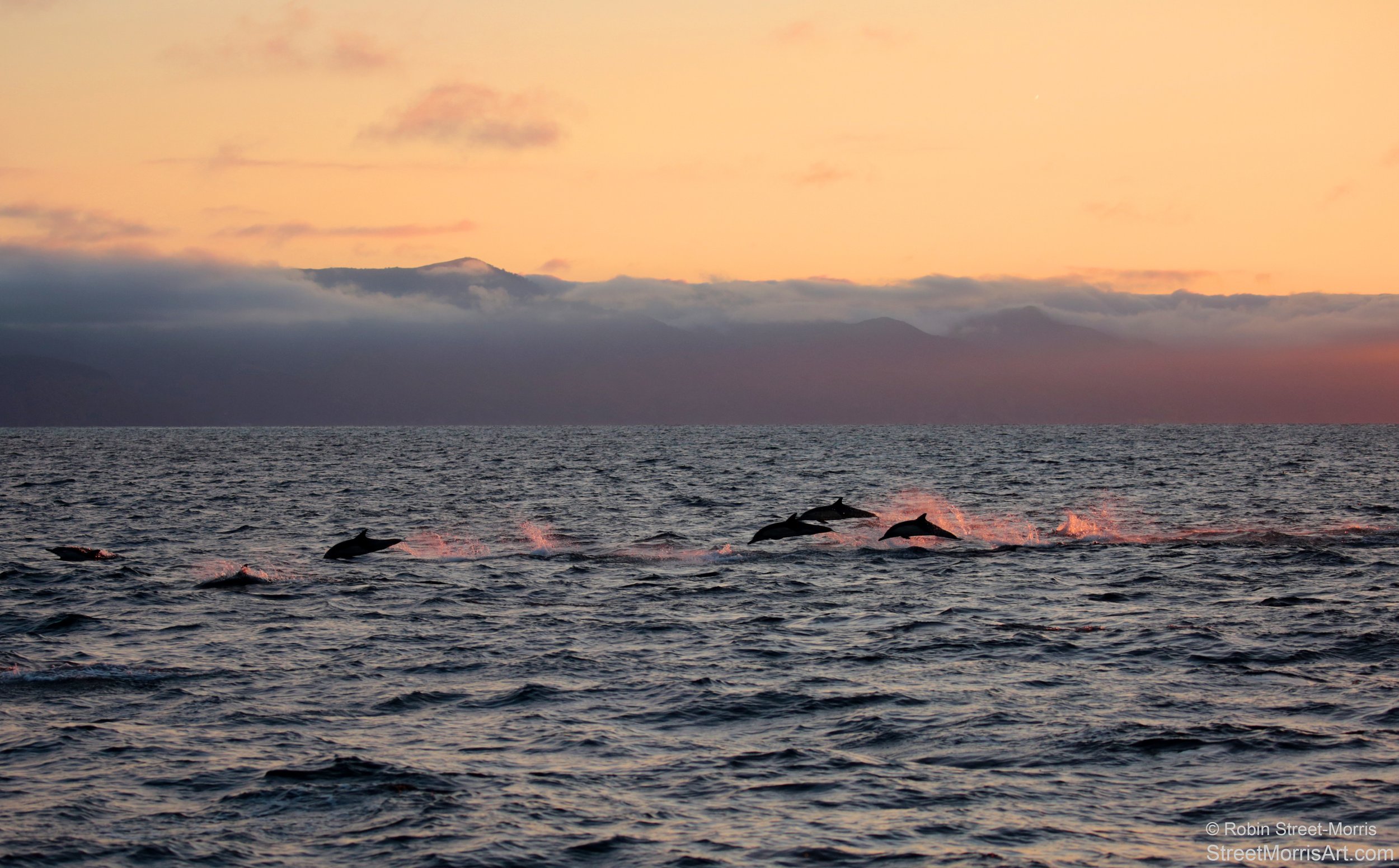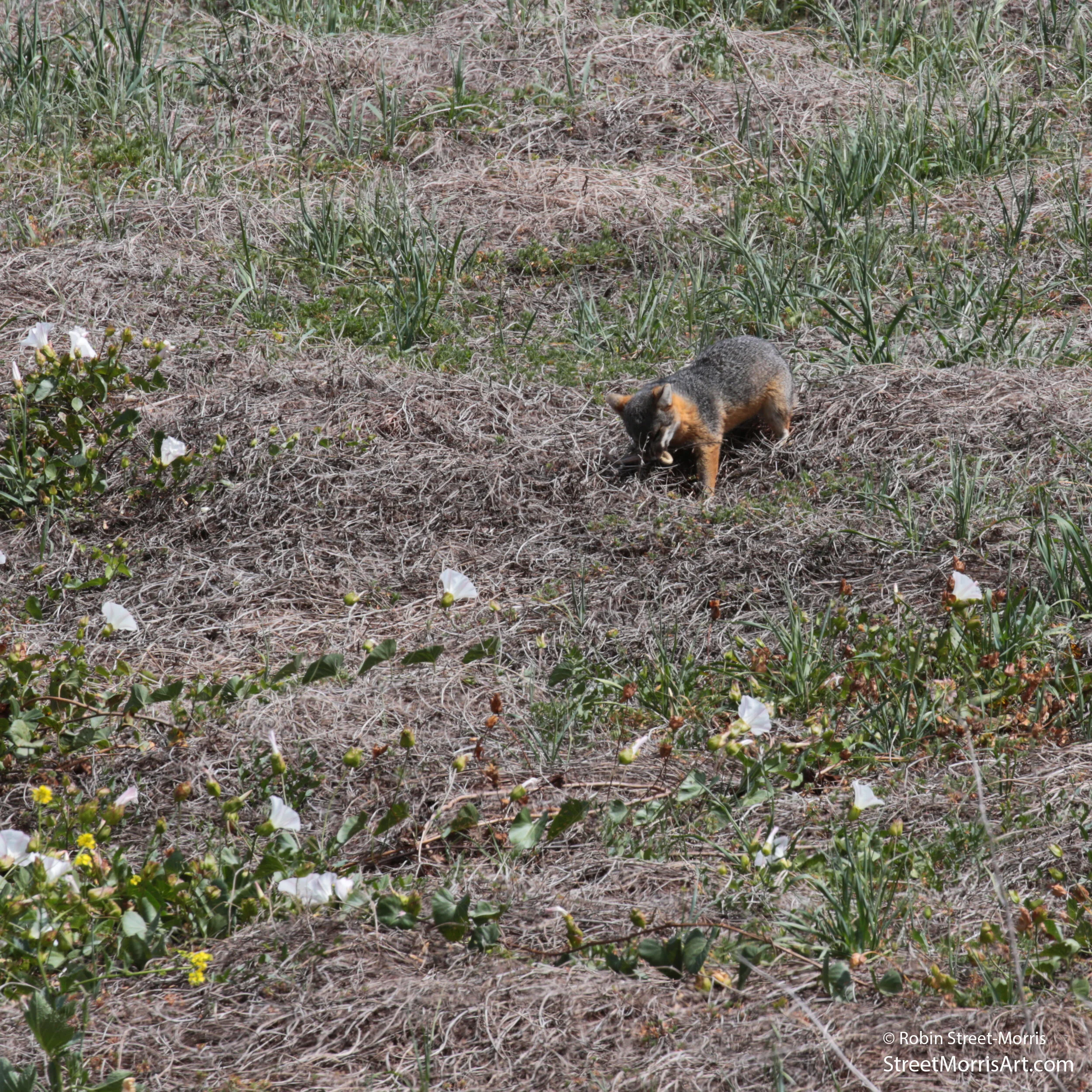This latest camping trip to Channel Islands National Park was a rough one. If you're not interested in the gritty aspects of nature I encourage to stop reading.
I've been going to Catalina and the Northern Channel Islands for quite a few years with one of the main purposes being observing the various subspecies of island foxes (Urocyon littoralis) that are endemic to each of the islands where they are the apex predators. According to the National Parks Service, "Island fox diets vary based upon food item diversity of the individual islands. On Santa Rosa Island, where food item diversity is high, deer mice, Jerusalem crickets, beetles, and earwigs are the preferred food. On other Channel Islands, diets include plant items such as fruits from cactus, manzanita, saltbushes and sea figs, as well as insects and deer mice when they are present. Occasionally, foxes forage along the shoreline for crabs and other marine invertebrates."
I've seen the Santa Cruz Island subspecies kill a snake, but never expected to see two foxes coordinate their efforts to do the same to another of their own species. Initially there were four foxes involved and one took off quickly thinking better of the decision to become involved for one reason or another. It was a flurry of activity with what appeared to be an older fox with floppy ears losing its life to one fox biting down on its neck and shaking while the other did the same with its tail and hindquarters. This happened as the floppy-eared fox was approaching the water spigot in Lower Scorpion Campground, so perhaps it was about guarding prime territory with a consistent water source and snacks that can be pilfered if not offered outright. I figured they were going to leave it for dead, but no. They began chewing on some of the most sensitive spots and ripping. One sat back in the grass watching and then rejoined the activity. The other fox then dragged its prey into a nearby lemonade berry and continued to pick at it. I’ve posted a bit of the footage I recorded here and it’s not for the faint of heart. Presumably the carcass was dragged further into the shrub because it was nowhere to be found when the ranger came to move it out of the way later that day and shared with campers present that this happens occasionally. If one is interested in these foxes past seeing one and thinking "awww!" (that's how the interest in them begins because they are beyond cute), this encounter raises a lot of questions. I'd seen them fight and retreat to lick their respective wounds. It's what animals do, humans included. I just hadn't pegged them for murdering their own species and cannibalizing them. It's been pretty dry which leads to there being less food for them, so were they extra hungry? None appeared malnourished, the victim included. There were other foxes foraging for plentiful insects and crunching away on them with a veritable Thanksgiving feast of beetles on our tent alone. Is dying in relative peace of injuries, disease and/or old age under a shrub the norm or does this happen more often than we know? A paper I read here showed fur rarely shows up in scat. Were either of these foxes related to the one they killed? On good terms with each other at one point? As scarring as this was, I’ve concluded it would be pointless and counterproductive for me to stop loving them because of what I saw. By that logic I would swear off all humans because we still kill each other sometimes for a litany of reasons that are either considered necessary or not depending upon one's perspective.
If you’re a fox biologist who finds this post and are interested in seeing footage of the kill for research purposes, please contact me by selecting “Art Inquiries” in the menu at the top.
I often don't notice details like the puss dripping from its eye until I'm editing my photos on the desktop.
You’ve made it this far, so here’s one foraging for ripe fruit in one of the fig trees by the ranger station at Scorpion Ranch. They’re really good at climbing trees.
